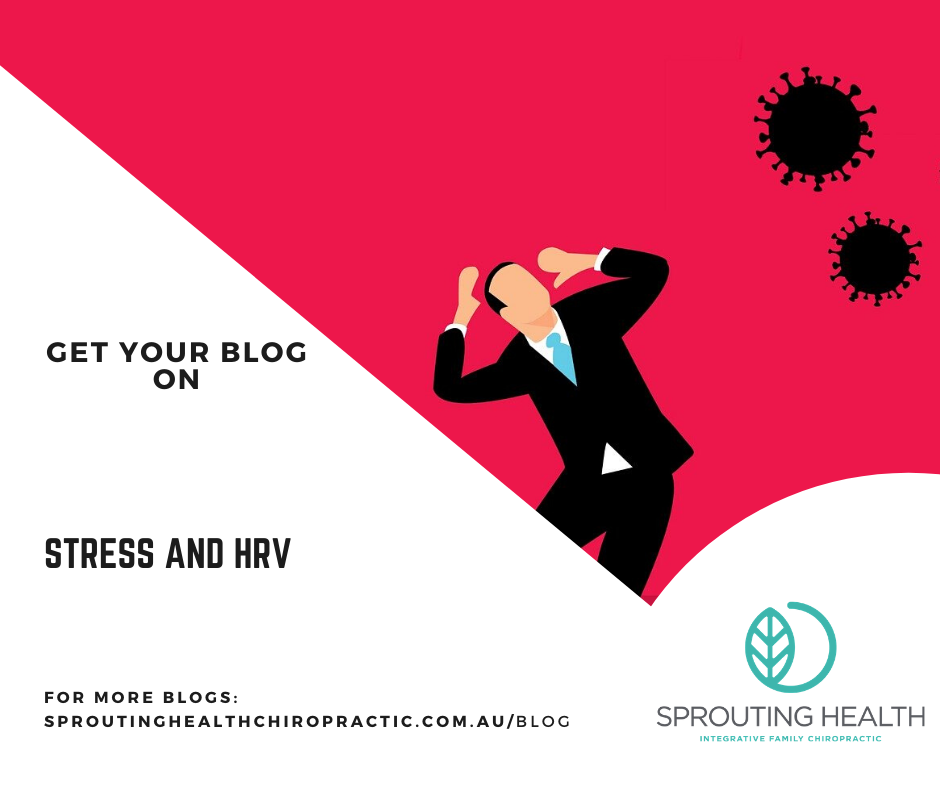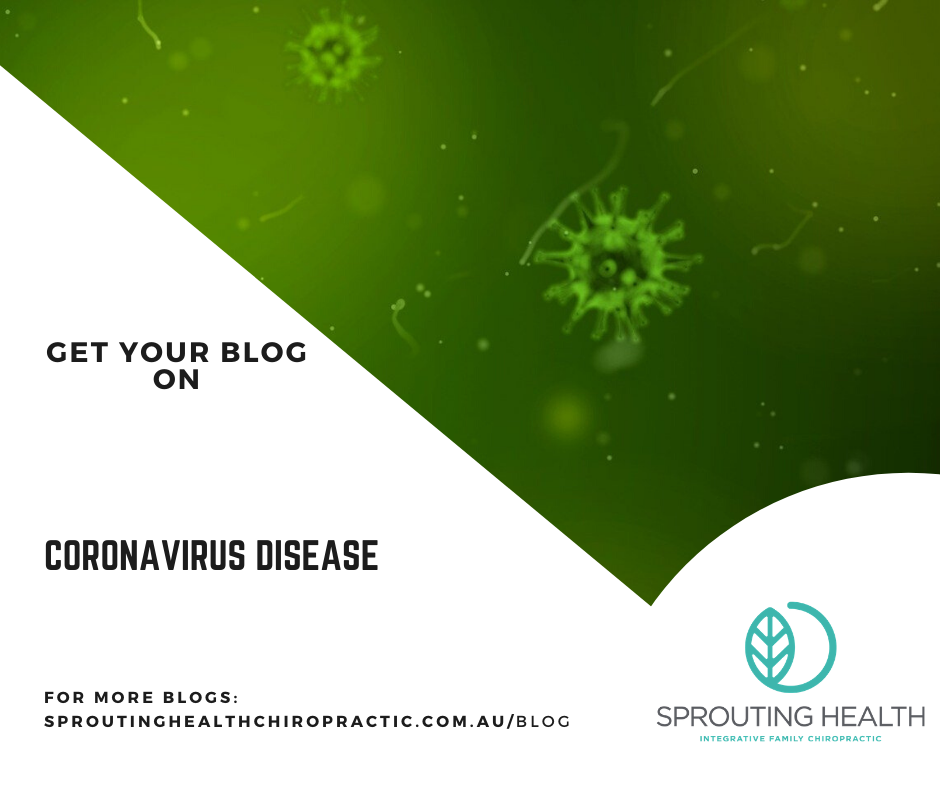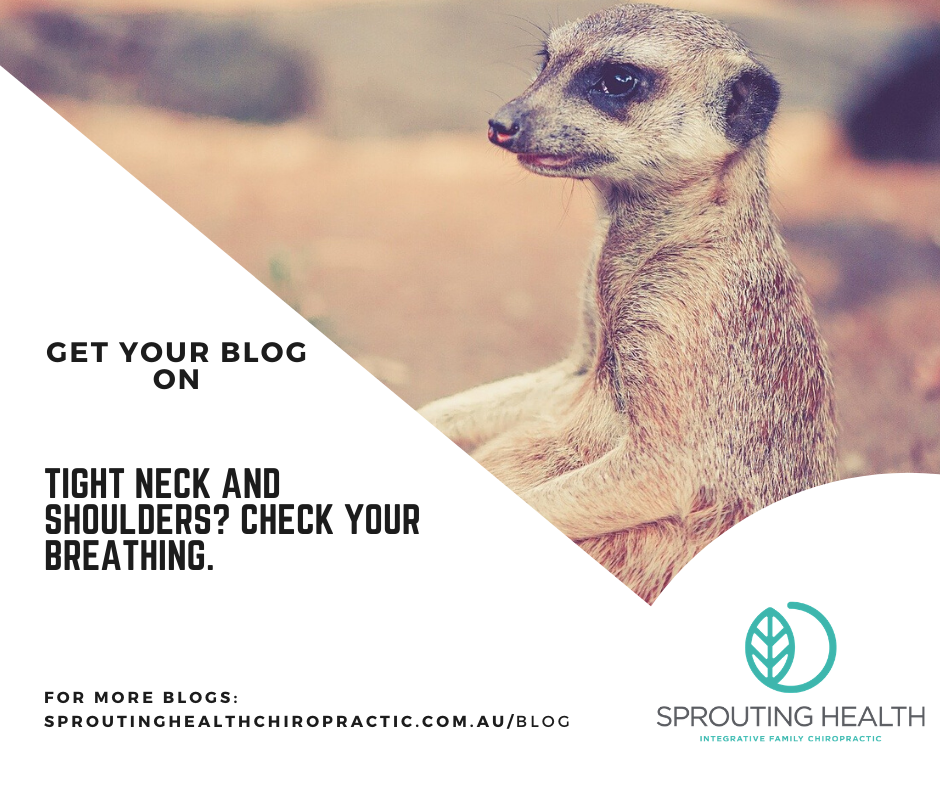|
In these uncertain times, we are all exposed to extra stress at the moment. Stress from not knowing what tomorrow will bring, will I have a job, will someone I know get sick. We are often asked how we, as chiropractors are able to help with stress, and this is an interesting question; especially at the moment. To answer this question, we are going to look at the impact of the chiropractic adjustment (spinal manipulation) on heart rate variability (HRV). HRV simply put, will measure the intervals between heart beats, and give us information about our sympathetic (fight or flight) and parasympathetic (rest & digest) nervous systems. (1) We need a good balance between theses system for a healthy response. A low variability is associated with increased risk for chronic disease. (2) When we are stressed, our nervous system goes into a sympathetic dominance which can lead to an increase in our heart rate, increased muscle tone (especially in the neck), but decreases our ability to concentrate. (3, 4) But back to the main question at hand, how can a chiropractor help me and my body with stress? Well, there have been a number of studies looking into how adjustments to the spine can influence the autonomic nervous system (parasympathetics and sympathetics). They suggest that adjustments to the neck (cervical spine) and low back (lumbar spine) will increase our parasympathetic response, which in turn will help manage that stress induced sympathetic response. (5-8) So, if you, or someone you know is struggling with their stress levels, please give our office a call to see if we can help you manage your stress. We can also provide you with exercise and lifestyle advice to help you manage your condition. References 1. Win, N. N., Jorgensen, A. M. S., Chen, Y. S., & Haneline, M. T. (2015). Effects of upper and lower cervical spinal manipulative therapy on blood pressure and heart rate variability in volunteers and patients with neck pain: a randomized controlled, cross-over, preliminary study. Journal of chiropractic medicine, 14(1), 1-9. 2. Thayer, J. F., Åhs, F., Fredrikson, M., Sollers III, J. J., & Wager, T. D. (2012). A meta-analysis of heart rate variability and neuroimaging studies: implications for heart rate variability as a marker of stress and health. Neuroscience & Biobehavioral Reviews, 36(2), 747-756. 3. Taelman, J., Vandeput, S., Spaepen, A., & Van Huffel, S. (2009). Influence of mental stress on heart rate and heart rate variability. In 4th European conference of the international federation for medical and biological engineering (pp. 1366-1369). Springer, Berlin, Heidelberg. 4. Hjortskov, N., Rissén, D., Blangsted, A. K., Fallentin, N., Lundberg, U., & Søgaard, K. (2004). The effect of mental stress on heart rate variability and blood pressure during computer work. European journal of applied physiology, 92(1-2), 84-89. 5. Borges, B. L. A., Bortolazzo, G. L., & Neto, H. P. (2018). Effects of spinal manipulation and myofascial techniques on heart rate variability: a systematic review. Journal of bodywork and movement therapies, 22(1), 203-208. 6. Roy, R. A., Boucher, J. P., & Comtois, A. S. (2009). Heart rate variability modulation after manipulation in pain-free patients vs patients in pain. Journal of manipulative and physiological therapeutics, 32(4), 277-286. 7. Giles, P. D., Hensel, K. L., Pacchia, C. F., & Smith, M. L. (2013). Suboccipital decompression enhances heart rate variability indices of cardiac control in healthy subjects. The Journal of Alternative and Complementary Medicine, 19(2), 92-96. 8. Shafiq, H., McGregor, C., & Murphy, B. (2014, August). The impact of cervical manipulation on heart rate variability. In 2014 36th Annual International Conference of the IEEE Engineering in Medicine and Biology Society (pp. 3406-3409). IEEE.
0 Comments
Due to the continued updates with the COVID-19 virus, we are urging all patients to please self isolate if they are feeling unwell, so that we do not put other patients, our staff or practitioners at risk of infection.
If you are feeling unwell or have recently travelled overseas, please let us know and we can easily change your appointment. We are implementing the advice from the Australian Government Department of Health as it's updated. In the clinic, we have introduced additional cleaning, strict hand sanitising and alcohol based cleaning for all our reception staff and practitioners to use in between each patient visit, and ask that all patients wash hands or use hand sanitiser at the reception desk when they enter the practice. We have stepped up our usual cleaning practices by also disinfecting all surfaces and door handles constantly. Magazines and toys are being cleaned frequently but feel free to bring a book if you would like to take advantage of some quiet time to yourself if you arrive early. This virus has been a great reminder of the importance of having good health and practising what we consider common sense good health practices. Our main priority is the health of our patients so if there is anything we can do to help you or your family in this time please get in contact with us. Please phone us if you need advice or want to ask any questions about what measures we are taking in the practice we are taking to mitigate the spread of this virus. Chiropractors often see people with neck pain and tight shoulders! Many of them have recurrent neck pain, tight shoulders and chest, even after a massage, physiotherapy or chiropractic treatment. Sometimes we all miss out on the smallest but very important clue; breathing. Breathing is something running in the background, you do not need to think to breathe. Your respiratory center located in your brainstem controls your breath rate and the depth depends on your physiological state.(1) Primarily, the diaphragm is the muscle responsible for controlling the air pressure in your lungs to pull oxygen in and push carbon dioxide out from your lungs. Looking at human anatomy, the nerve supply of the diaphragm originates from cervical nerve root C3, C4 and C5. Research showed patients who suffer from chronic neck pain were more likely to have problems with respiratory strength than patients without neck pain.(2) When there is a decrease oxygen intake due to various causes such as weakness in our diaphragm, our intelligent system will recruit accessory muscles to help us get adequate oxygen into our body to maintain our homeostasis and basic functions.(1) These accessory muscles include the sternocleidomastoid(SCM), pectoralis major and minor, serratus anterior, latissimus dorsi, and serratus posterior superior.(1) In short, they are your neck and chest muscles. Over time, accessory muscles can get overworked, fatigued and they become tight, as they don’t get to rest and recover while you are asleep because you are always breathing! Taking care of the true cause of your neck and shoulder tightness rather than focusing on the end stage symptoms is the best tactic. Otherwise it is analogous to looking at the muffler for the cause as to why the car is blowing out smoke, rather that looking at the engine. We will look into some tips regarding how to breathe properly in the coming blogs. Stay tuned! If this sounds like you or your loved ones, feel free to have a chat with one of our chiropractors and see how we can help manage your issues. References 1. Tortora GJ, Derrickson BH. Principles of anatomy and physiology: John Wiley & Sons; 2018. 2. Dimitriadis Z, Kapreli E, Strimpakos N, Oldham J. Respiratory weakness in patients with chronic neck pain. Manual therapy. 2013;18(3):248-53.  Opioid use in Australia and internationally has been increasing rapidly over the last 2 decades (1). Usually it is associated with a long history of pain, and patients are looking for an answer to help address chronic or severe pain. Patients may be more likely to be given short-acting and weak opioids, but the proportion of people given strong opioids has increased over time (1). Do you or a loved one use any form of opioids? This is an important article that could make the world of difference to you. “Rates of opioid use in Australia have remained high since 2013, with approximately 3 million adults using opioids and over 1.9 million adults initiating opioids each year.” (1) The increased use has paralleled with increases in opioid-related morbidity and mortality, including dependence, hospitalisation and overdose (1). Chronic opioid therapy has been associated with constipation, sleep-disordered breathing, sleep disturbance, nausea, vomiting, fractures, HPA (hypothalamic-pituitary-adrenal) dysregulation, hormonal imbalance, menstrual cycle issues and other adverse effects (2)(3). All of these potential adverse effects is the risk that people take to try to help with the management of pain that is severe or chronic. In a recent research article where a systemic review and meta-analysis was conducted, it was demonstrated that there is an inverse association between chiropractic use and opioid receipt among patients with spinal pain (4). So chiropractic users had much lower odds of receiving or requiring to have an opioid prescription. This indicates that chiropractic care may lower the need for patients to seek an opioid prescription for spinal pain management. So if you want to find out if chiropractic care may help manage spinal pain for you or your loved ones, have a chat with one of our chiropractors to see how they can assist. “It is better to try natural measures first when trying to address issues in regards to health” |
AuthorBlogs by the team at Sprouting Health Archives
July 2024
Categories |




 RSS Feed
RSS Feed
